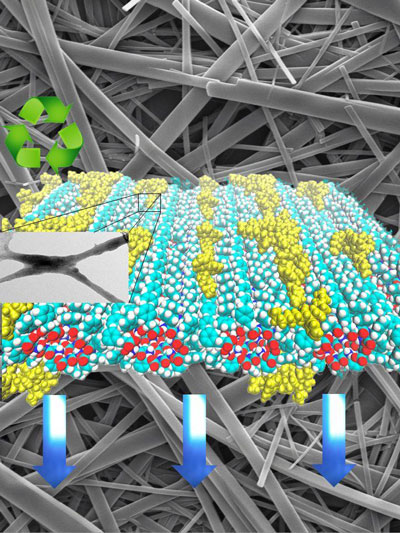Peptide Nanotubes: Precision Engineering for Nanoscale Applications
Definition: Peptide nanotubes are nanoscale hollow cylinders formed by the self-assembly of cyclic peptides, offering revolutionary applications in fields such as biomedicine, electronics, and environmental science. Their unique properties include biocompatibility, modifiability, and stability, making them pivotal in nanotechnology advancements.

Detailed Formation and Characteristics
Peptide nanotubes result from the self-assembly of cyclic peptides, which are structured from alternating D- and L-amino acids. This assembly leads to stable beta-sheet formations that curl into tubular structures. The tube's properties – diameter, wall thickness, and surface chemistry – can be precisely controlled by the amino acid sequence. This molecular engineering enables the creation of nanotubes tailored for specific functions, such as targeted drug delivery, where the nanotube's surface can be modified to recognize and bind to cancer cells specifically.
Concrete Applications Across Disciplines
The versatility of peptide nanotubes extends across various disciplines, with specific applications including:
- Biomedical Engineering: In drug delivery, peptide nanotubes can be engineered to encapsulate anticancer drugs, such as doxorubicin, releasing them directly into tumor cells, minimizing side effects and improving treatment efficacy. This targeted delivery system exemplifies the nanotubes capacity for enhancing therapeutic outcomes.
- Electronics: Peptide nanotubes have been utilized in the development of nanoscale transistors and sensors. Their ability to conduct electricity can be harnessed by incorporating metal ions or nanoparticles within the tubes, leading to the creation of conductive pathways. For instance, peptide nanotubes embedded with gold nanoparticles have been used to fabricate highly sensitive biosensors for detecting glucose levels in blood.
- Environmental Science: Leveraging their high surface area and chemical specificity, peptide nanotubes serve as effective adsorbents for water purification, capturing and removing heavy metals like lead and mercury from contaminated sources. Their biodegradability and non-toxicity highlight their advantage over traditional purification agents.
Technical Advantages in Applications
The structural and chemical properties of peptide nanotubes offer specific advantages for their applications:
- Drug Delivery: The biocompatibility and precise functionalization of peptide nanotubes allow for the safe transportation and controlled release of pharmaceuticals within the body. Their hollow structure can encapsulate drugs, protecting them from degradation before reaching their target site.
- Electronic Components: The electrical properties of peptide nanotubes, combined with their nanoscale precision, make them ideal for constructing components with tight space constraints. Their conductivity can be tuned through the selective incorporation of metal ions, offering a customizable platform for electronic devices.
- Environmental Remediation: Peptide nanotubes can be engineered to selectively bind to contaminants, making them highly efficient for purifying water. Their structural stability ensures they remain intact during the cleanup process, while their biodegradability ensures they do not contribute to environmental pollution post-use.
Challenges and Future Directions
While peptide nanotubes show immense potential, challenges in scalability, uniformity in mass production, and functionalization remain. Addressing these challenges through innovative manufacturing techniques and further research into peptide chemistry will unlock new applications and enhance their effectiveness. The exploration of peptide nanotubes is paving the way for groundbreaking developments in nanotechnology, promising solutions to complex problems across science and engineering fields.
Further Reading
Bioactive Materials, Peptide-based nanomaterials: Self-assembly, properties and applications
Advanced Materials, Peptide-Based Nanotubes and Their Applications in Bionanotechnology
